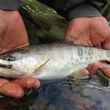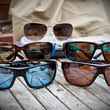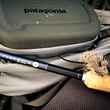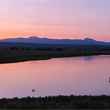See our updated for 2015-2016 list of best fishing sunglasses.
As we’ve noted in previous “best of” features, that term should be taken with a grain of salt. Even though the internet is flush with lists of the best of this or that, the reality is that few -- if any -- of the outlets that publish such lists can claim to have sufficiently tested the field well enough to declare any one item the best.
What you’re reading is more accurately described as our favorite fishing sunglasses of 2013. That said, what follows represents a year of on-the-water testing of dozens of pairs of fishing sunglasses -- including offerings from a diverse array of manufacturers -- in a wide variety of circumstances and environments in which one might find themselves when pursuing their fishy quarry.
It’s also worth noting that we’re changing the format this year a bit. While we’ve previously highlighted specific pairs of sunglasses that we consider standouts amongst the crowd, this year we’re selecting the best lenses across a group of categories. The reality is, virtually every sunglass manufacturer offers a select set of lenses spread across a number of frames and, when it comes down to it, it's the lens that matters. Frames are not without consequence however, far from it, and given such we’ll be listing recommended frame choices for each of our selections.Finally, if you're still making light of your fishing eyewear, stop. We've heard fishing guides describe high-quality, polarized sunglasses as equally important on-the-water gear as your rod, line and flies. Being able to see the fish you're after is often significantly more than half the battle. Even if it means stealing from your rod or reel budget in order to be able to head to the stream with high-quality sunglasses, doing so should be done without pause.
Enough housekeeping. On with the list.




























